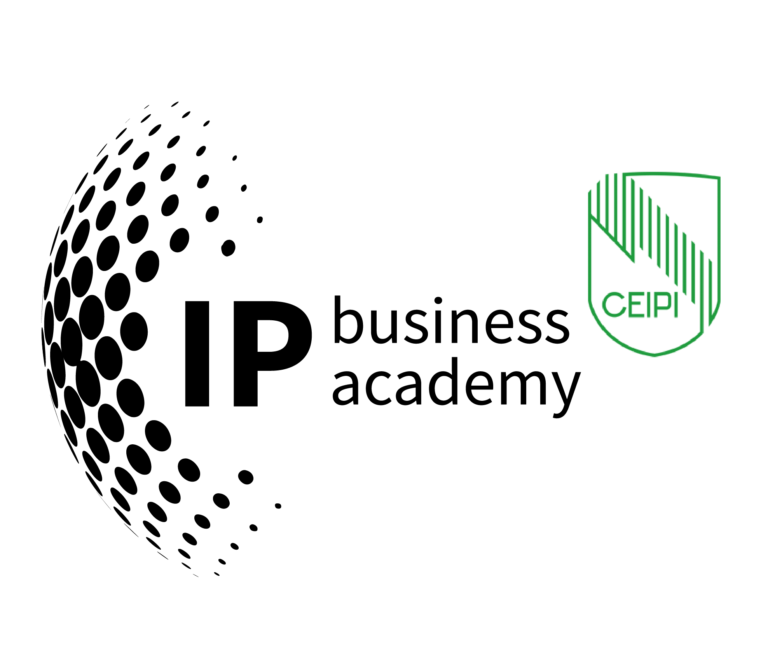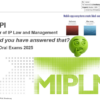Thought Leadership for IP Experts – White Paper for the exchange of experience at Weickmann & Weickmann
In IP practice, expertise is necessary—but not sufficient. Clients, founders, investors, and institutions increasingly assess advisors long before the first call by scanning their digital footprint for authority, clarity, and practical insight. This post distils the core messages from the new White Paper Thought Leadership for IP Experts and explains how to translate know‑how into visible authority, credibility, and systematic business development. It also points to resources on the IP Business Academy and the IPBA Connect portal that make implementation concrete.
Here you get access to the white paper on Thought Leadership for IP Experts:
White Paper Thought Leadership
Send download link to:
Why thought leadership in IP matters now
In competitive IP markets, buyers don’t just want accurate filings. They expect context, foresight, and actionable narratives that connect legal outcomes with product strategy, market timing, and risk. Done well, thought leadership reduces uncertainty for decision‑makers, shortens the path from first contact to mandate, and reframes IP from a technical function to a strategic asset. It also expands your surface area of recognition—opening doors to panels, collaborations, policy dialogues, and cross‑border work. Over time, consistent thought leadership compounds into reputation: clients, peers, and institutions begin to associate your name with clarity and relevance in a specific domain.
Three outcome areas illustrate the value:
- Trust & de‑risking: Clear, authoritative content lowers perceived risk and accelerates hiring decisions. Repeated demonstrations of competence reassure non‑specialists making high‑stakes choices under time pressure.
- Market differentiation: Distinct perspectives anchored in a specialty (industry and technology) carve out recognizable expert territory. You become memorable and referable in crowded markets.
- Ecosystem influence: Regular contributions position you as a natural convener—someone whose perspective shapes debates and attracts collaboration beyond individual mandates.
A practical note: thought leadership is not a campaign; it is a system. Installing the system once—positioning, rhythm, formats, distribution—lets quality and consistency multiply your efforts.
Core principles that convert expertise into authority
Turning expertise into recognized authority requires more than knowledge alone. This part introduces the guiding ideas—authenticity, focus, clarity, consistency, and proof—that transform professional competence into a visible and trusted reputation for IP experts.
- Authenticity: Align themes with real case experience, teaching, and research. Substance and integrity are the bedrock of trust; opportunistic positioning is quickly exposed.
- Focus: Own a narrow set of themes (e.g., AI‑enabled patent strategy for industrial automation; operational IP management in MedTech). Repetition around a signature topic builds memorability and defensibility.
- Clarity: Explain complex issues in business language without losing precision. Frameworks beat scattered facts because they help non‑specialists act.
- Consistency: Publish on a predictable rhythm and reinforce the same signature ideas across formats. Regularity signals professionalism to both audiences and algorithms.
- Proof: Back claims with cases, teaching roles, prior publications, and recognized platform placements. Tangible evidence converts attention into confidence.
When these principles work together, your output shifts from isolated posts to a coherent public identity that stakeholders can recognize, recall, and trust.
Channels & formats that build compounding visibility
Thought leadership matures when ideas appear consistently across complementary channels. Each format serves a distinct purpose; together they reinforce recognition and reach beyond personal networks.
- LinkedIn: Short, insight‑dense posts, carousels, and thoughtful engagement with peer content. This is the daily stage where decision‑makers already spend attention and where your signature ideas can show up in real time.
- IP Business Academy blog: Long‑form articles, expert interviews, and teaching pieces that create depth and searchability. Durable references you can reuse in conversations and newsletters.
- Webinars & live talks: Interactive settings that showcase thinking under questions. Recordings fuel clips and summaries across channels.
- Guides & explainers: Glossaries, checklists, and how‑to pieces that audiences return to. Evergreen assets with long shelf life.
- Academic & professional outlets: Journals and conference talks validate expertise for peers. When connected back to digital channels, scholarly work also gains practical visibility.
- Newsletters: Curated updates that create a trusted, recurring touchpoint with your community and invite ongoing dialogue.
- Podcasts: Audio formats that enable deeper storytelling and personal connection; transcripts and clips extend reach.
The strategy question isn’t which channel, but how these channels form a coherent narrative that follows your client journey.
The IP Subject Matter Expert model—why it works
An IP Subject Matter Expert is more than a practitioner with credentials. Within the IPBA Connect platform and on the IP Business Academy, IP Subject Matter Experts translate deep knowledge into accessible, problem‑solving narratives tied to real outcomes—product launches, licensing strategies, risk mitigation, and competitive positioning. The model structures positioning, creation, and distribution so every activity strengthens one recognizable profile.
- Positioned authority: A clear theme and USP anchored in a consistent narrative. Audiences learn to associate your name with a specific competence.
- Systematic creation: Editorial collaboration turns raw expertise into accessible, high‑quality content without losing depth.
- Coordinated distribution: Amplification through trusted channels—reaching decision‑makers you can’t reach alone and reinforcing visibility across formats.
- Efficiency & momentum: Less trial‑and‑error; more compounding recognition and inbound opportunities with each contribution.
In practice, this turns sporadic communication into a professionalized system where every post, article, and talk is a building block of reputation.
Best practices—and pitfalls to avoid
Best practices
- Story‑framed insight. Use real cases (anonymized) to show why an issue matters for products, markets, and timing. Context makes expertise usable.
- Audience‑first writing. Address innovators, in‑house IP, and investors in their language. Show decisions and trade‑offs, not only principles.
- Signature series. Establish recurring formats (e.g., weekly claim clarity, monthly IP‑strategy patterns) that build habits and anticipation.
- Evidence & references. Interlink prior articles on the IP Business Academy to build a visible trail of credibility.
- Engagement rituals. Comment, synthesize threads, and unpack debates so others see you as a reliable source for orientation.
Common pitfalls
- Over‑promotion. Advertising‑style content erodes trust in expert markets.
- Long gaps reduce recognition and algorithmic reach.
- Jargon overload. Precision without accessibility limits influence; balance legal accuracy with business clarity.
- Topic spread. Covering everything means owning nothing; narrow the scope to reinforce your signature.
A simple cadence helps: one short LinkedIn post per week, one substantial article per quarter, and one community contribution (panel, interview, glossary entry) per month. Keep themes tight and reiterate your core narrative across formats.
Looking ahead: trends shaping thought leadership in IP
The landscape of thought leadership is evolving quickly. This section highlights emerging forces—from AI to ESG—that redefine how IP professionals gain visibility and authority, ensuring their expertise remains timely and relevant.
- AI‑assisted analysis. Faster synthesis and data‑informed commentary raise expectations. Experts who provide timely context in plain language will stand out.
- Micro‑communities. Trust concentrates in curated groups where niche authority outperforms broad generalism. Participation in focused forums builds strong ties.
- Cross‑border relevance. With AI, green tech, and life sciences accelerating globally, clients prefer advisors whose narratives travel across jurisdictions and industries.
- ESG & societal relevance. Linking IP strategy to sustainability and governance strengthens resonance at board level and with public actors.
- Platform economies. Recognition grows inside trusted ecosystems. Presence on the IP Business Academy matters for discoverability among qualified audiences.
These trends reward experts who combine rigor with accessibility and who operate within structured platforms that multiply reach.
Systematic support through IPBA Connect
Doing this alone is slow and inconsistent. IPBA Connect with the IP Business Academy offers a ready‑made structure—editorial quality assurance, design, SEO/meta, publication, analytics, and community integration—so more of your effort converts into recognition and qualified conversations. In practice, that means reaching the right audiences sooner and aligning visibility with measurable business development outcomes.
This White Paper also serves as preparation for the personal exchange of experiences on October 10, 2025, in Munich, hosted by Weickmann & Weickmann. You can find the event information here. The session will focus on authentic positioning, effective LinkedIn practices, and the SME model—so that participants leave with practical steps and the right rhythm.
Further resources for IP experts
Explore practical toolkits that align with the approach above—many are available free of charge:
Digital Marketing for IP Experts — frameworks, templates, and workflows tailored to expert visibility.
Business Development for IP Experts — systems that connect visibility with conversations and mandates.
In addition, the White Papers on LinkedIn and on Personal & Expert Branding complement this piece and provide deeper guidance on platform mechanics and brand foundations.
Conclusion
Thought leadership turns expertise into influence. For IP professionals, it builds trust before the first call, differentiates niche competence, and opens doors to collaborations and roles that amplify impact. With a system in place—authentic positioning, tight focus, clear explanation, consistent rhythm, and visible proof—your ideas become signatures that audiences can find, understand, and apply. Structured support from IPBA Connect and publication on the IP Business Academy ensure that each contribution strengthens a coherent public profile and compounds in value over time.
The takeaway is simple: install the system once, then let quality and rhythm expand your presence—so your expert work speaks for you even when you are focused on clients.



